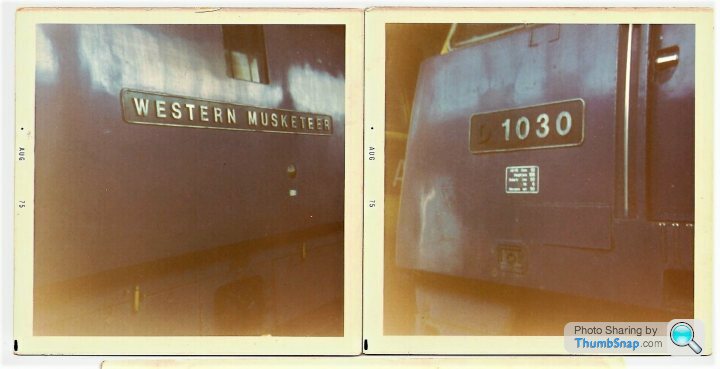Loco sheds and other railway buildings...
Discussion
hidetheelephants said:
velocemitch said:
Stevepolly said:
For the uninitiated (me) what is a diesel hydraulic? What do the hydraulics do?
It’s the final drive system, think of it like a giant automatic gearbox, which acts a torque converter, to allow the Diesel engine to develop power at fairly high revs, to be converted to lots of torque at the wheels.The majority of Diesel locos in the UK were diesel electric, which uses a uses the engine to turn a generator, which in turn drives electric motors which turn the wheels.
BR standardised on diesel electric, so couldn’t live with the Hydaulics, which were always confined to the Western region anyway.
It’s a quirk of Railway History that the Great Western Railway and later the Western region of BR always wanted do something different to everyone else.
matchmaker said:
hidetheelephants said:
velocemitch said:
Stevepolly said:
For the uninitiated (me) what is a diesel hydraulic? What do the hydraulics do?
It’s the final drive system, think of it like a giant automatic gearbox, which acts a torque converter, to allow the Diesel engine to develop power at fairly high revs, to be converted to lots of torque at the wheels.The majority of Diesel locos in the UK were diesel electric, which uses a uses the engine to turn a generator, which in turn drives electric motors which turn the wheels.
BR standardised on diesel electric, so couldn’t live with the Hydaulics, which were always confined to the Western region anyway.
It’s a quirk of Railway History that the Great Western Railway and later the Western region of BR always wanted do something different to everyone else.
velocemitch said:
Higher speed engines than the Diesel Electrics, apart from the Deltics of course.
Though I’m rather partial to the sound of the big English Electric 16 Cylinders myself. I never knew the Hydaulics, I wasn’t allowed that far south until it was too late.
On the rare occasions I could get up to Paddington from Bristol, I would tear across to the Circle Line and get round to KX ASAP to see Deltics.Though I’m rather partial to the sound of the big English Electric 16 Cylinders myself. I never knew the Hydaulics, I wasn’t allowed that far south until it was too late.
Writhing said:
Question for P5BNij.
I was just looking at the two pictures under the pic with the female and 4 guys. Can you talk us through the controls? What is the gauge that looks like a dartboard and what do the two levers do?
Certainly - the loco in the pic is a Class 47, the 'dartboard' is the AWS visual reminder. When approaching a colour light signal you pass over a magnet in the track (usually about 200 yards before the signal), this activates either a clear 'bell' or cautionary 'horn' sound in the cab depending on the colour aspect that signal is showing. On receiving the cautionary horn on the approach to either a yellow or red signal aspect you have to cancel / acknowledge the warning by pressing a button on the desk, as this takes place the dartboard will show the yellow and black pattern you see in that pic, if the signal is green and you receive the bell there is no need to cancel / acknowledge it and the dartboard will show an all black image. Failure to cancel the warning on approaching yellow or red aspects within a few seconds will activate the brakes.I was just looking at the two pictures under the pic with the female and 4 guys. Can you talk us through the controls? What is the gauge that looks like a dartboard and what do the two levers do?
It's a bit long winded but it's quicker to show it happening in real life than it is to describe it!

In that photo the driver has his hand on the main power controller, in front of it is the direction controller which has forward, neutral and reverse positions, the gauges are for the main air reservoir, the main brake itself, the direct loco brakes, speedometer, amps etc. Just below the power and direction controls you can just make out a small key in the front of the mounting, this unlocks the control desk allowing the driver to start the engine and build up the air (or vacuum) in the braking system before taking power.
Edited by P5BNij on Saturday 22 January 12:43
P5BNij said:
matchmaker said:
hidetheelephants said:
velocemitch said:
Stevepolly said:
For the uninitiated (me) what is a diesel hydraulic? What do the hydraulics do?
It’s the final drive system, think of it like a giant automatic gearbox, which acts a torque converter, to allow the Diesel engine to develop power at fairly high revs, to be converted to lots of torque at the wheels.The majority of Diesel locos in the UK were diesel electric, which uses a uses the engine to turn a generator, which in turn drives electric motors which turn the wheels.
BR standardised on diesel electric, so couldn’t live with the Hydaulics, which were always confined to the Western region anyway.
It’s a quirk of Railway History that the Great Western Railway and later the Western region of BR always wanted do something different to everyone else.
MoggieMinor said:
P5BNij said:
matchmaker said:
hidetheelephants said:
velocemitch said:
Stevepolly said:
For the uninitiated (me) what is a diesel hydraulic? What do the hydraulics do?
It’s the final drive system, think of it like a giant automatic gearbox, which acts a torque converter, to allow the Diesel engine to develop power at fairly high revs, to be converted to lots of torque at the wheels.The majority of Diesel locos in the UK were diesel electric, which uses a uses the engine to turn a generator, which in turn drives electric motors which turn the wheels.
BR standardised on diesel electric, so couldn’t live with the Hydaulics, which were always confined to the Western region anyway.
It’s a quirk of Railway History that the Great Western Railway and later the Western region of BR always wanted do something different to everyone else.
anonymous said:
[redacted]
 . Those Southern Region units were probably en route to Wolverton Works, in the ‘70s and ‘80s Rugby was a convenient location for storing various vehicles awaiting onward movement, often to different Works for refurbishment or scrapping. During 1974 and 75 some of the Met-Camm built Mk1 Pullman coaches were stored in the Up Sidings for months at a time, a few of us had a sneaky peek one evening and found them to be damp and musty inside.
. Those Southern Region units were probably en route to Wolverton Works, in the ‘70s and ‘80s Rugby was a convenient location for storing various vehicles awaiting onward movement, often to different Works for refurbishment or scrapping. During 1974 and 75 some of the Met-Camm built Mk1 Pullman coaches were stored in the Up Sidings for months at a time, a few of us had a sneaky peek one evening and found them to be damp and musty inside.Some more bits 'n' bob 
EE Type 4 D213 (now preserved) at Huddersfield in the '60s....

A contrast at Liverpool Lime St in 1965....

Sir Winston Churchill's funeral train at Waterloo on 30th January 1965....

EE Type 4 D371 at the top of Camden bank c.1963....
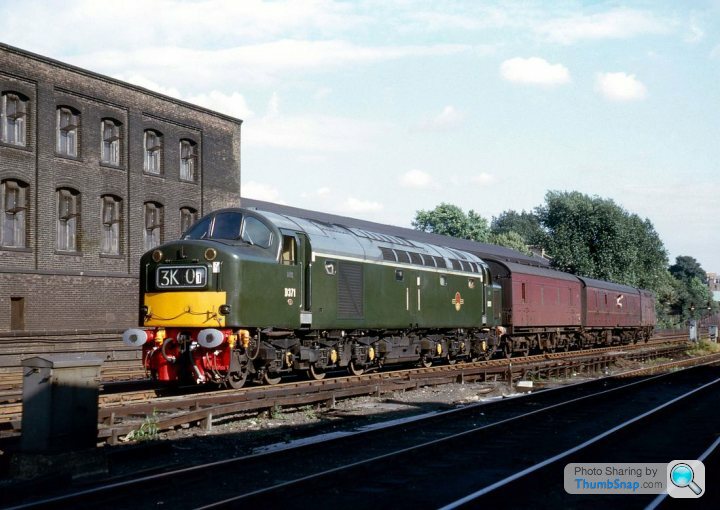
Swindon Works in the '70 showing a pair of the Maybach MD655 engines from a Western....
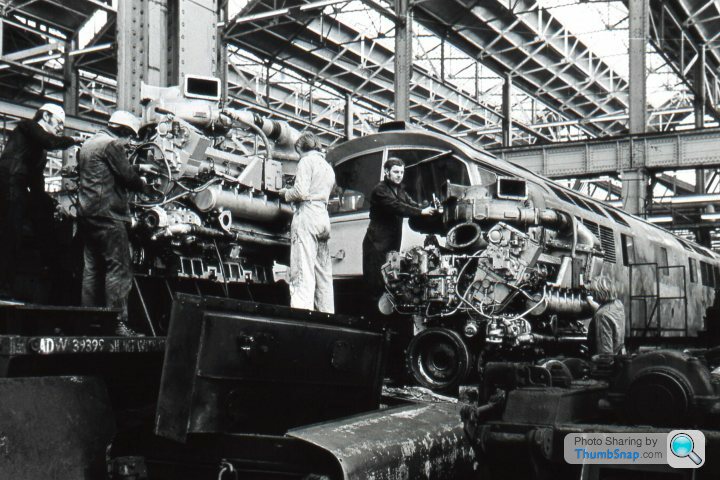
EE Type 4 / Class 50 has just arrived at Bristol Bath Road depot after transfer from Crewe, October 1972....
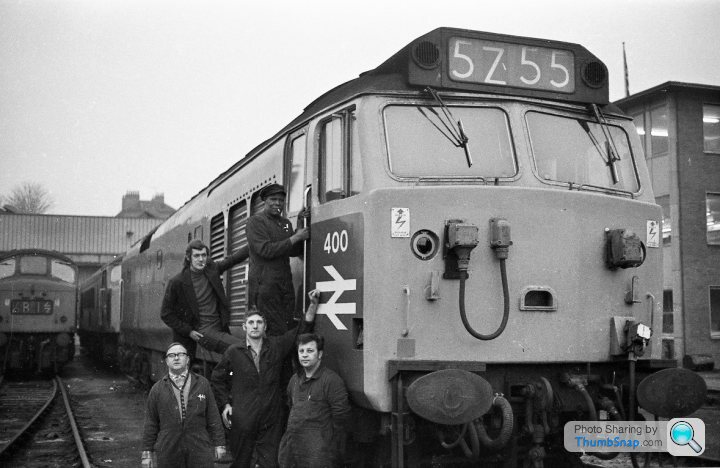
Kings X on 2nd January 1982, bye bye Deltics in BR service....
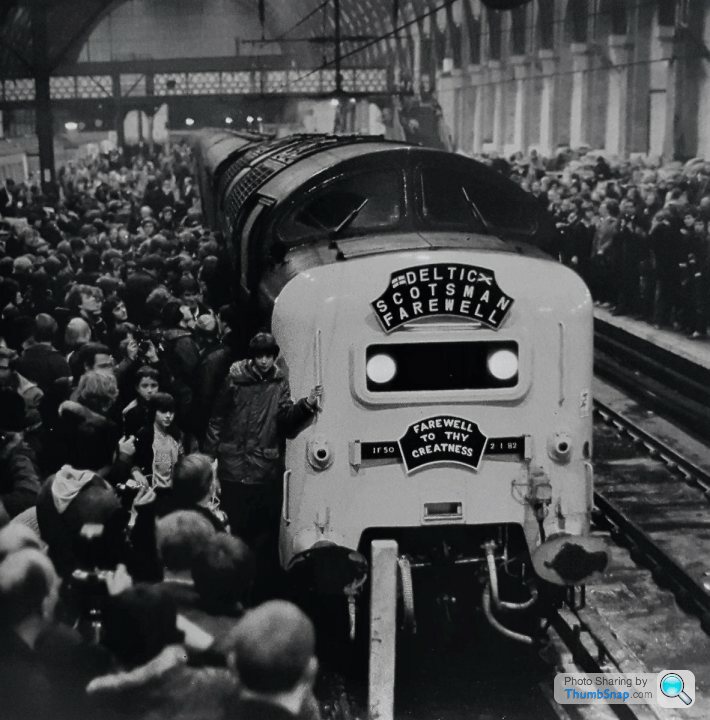
Cheddington station on the morning of 8th August 1963, taken just a few hours after the 1M44 Up Postal from Glasgow to Euston was stopped and robbed further up down the line at Bridego Bridge. EE Type 4 D326 and the first two 'High Value Package' coaches of the train are impounded in the Aylesbury Town branch platform and sitting down at the bottom of the first photo are the Rugby based train crew who were the first on the scene after the robbers had fled - they had been working a freight train on the adjacent Slow line and stopped to investigate....
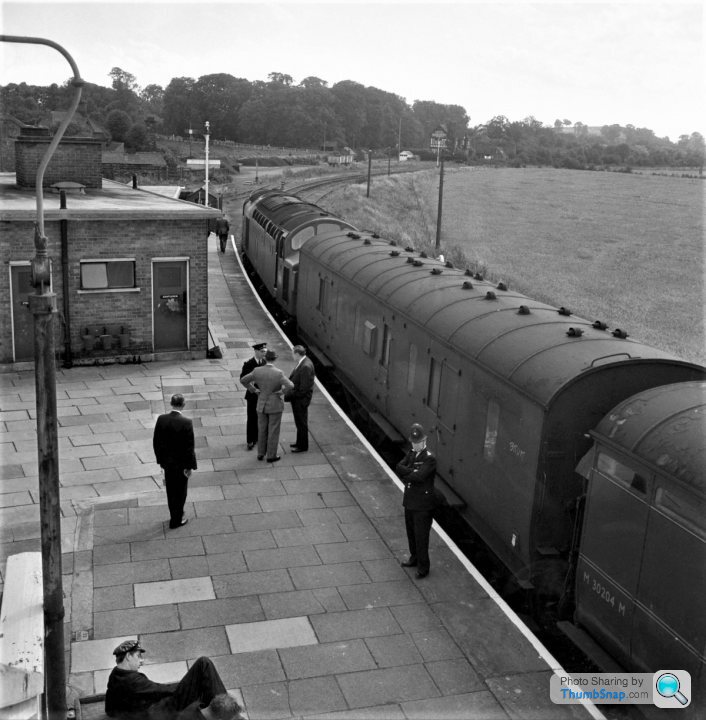


Kings X on 25th July 1981 with 55 014 and 55 015 on the blocks....

Nuneaton in the '70s, this signal on the line from Birmingham is now long gone but was very modern at the time, take your pick from the available routes it could give you....

Old Oak in early 1974 - when the 50s arrived from the London Midland Region they were not at all liked and some of the old hand drivers would make a point of deliberately looking for faults on them so they could take a Western off shed instead....
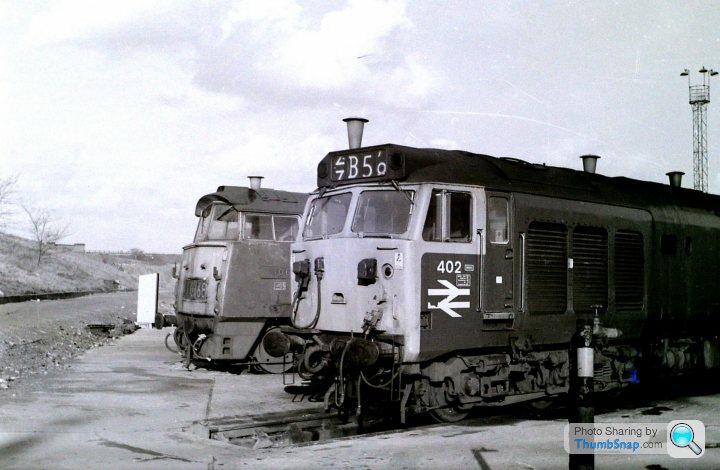
Old Oak c.1982....
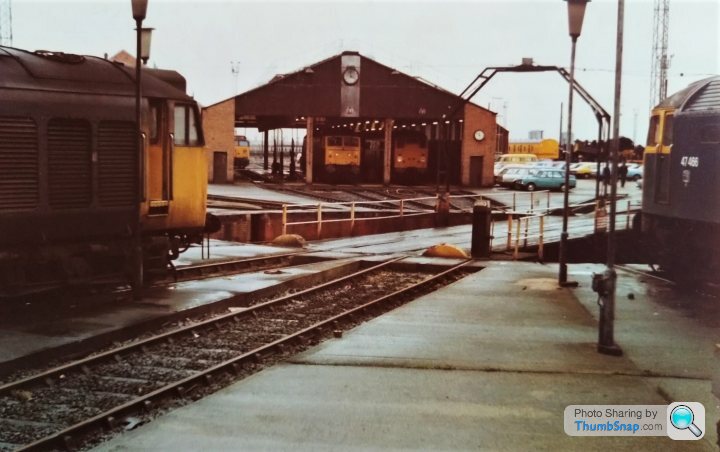
The old carriage sidings at Old Oak in late 1973 with a withdrawn Blue Pullman set waiting to be moved to South Wales for scrapping, this area is now part of the Crossrail depot....


EE Type 4 D213 (now preserved) at Huddersfield in the '60s....

A contrast at Liverpool Lime St in 1965....

Sir Winston Churchill's funeral train at Waterloo on 30th January 1965....

EE Type 4 D371 at the top of Camden bank c.1963....

Swindon Works in the '70 showing a pair of the Maybach MD655 engines from a Western....

EE Type 4 / Class 50 has just arrived at Bristol Bath Road depot after transfer from Crewe, October 1972....

Kings X on 2nd January 1982, bye bye Deltics in BR service....

Cheddington station on the morning of 8th August 1963, taken just a few hours after the 1M44 Up Postal from Glasgow to Euston was stopped and robbed further up down the line at Bridego Bridge. EE Type 4 D326 and the first two 'High Value Package' coaches of the train are impounded in the Aylesbury Town branch platform and sitting down at the bottom of the first photo are the Rugby based train crew who were the first on the scene after the robbers had fled - they had been working a freight train on the adjacent Slow line and stopped to investigate....



Kings X on 25th July 1981 with 55 014 and 55 015 on the blocks....

Nuneaton in the '70s, this signal on the line from Birmingham is now long gone but was very modern at the time, take your pick from the available routes it could give you....


Old Oak in early 1974 - when the 50s arrived from the London Midland Region they were not at all liked and some of the old hand drivers would make a point of deliberately looking for faults on them so they could take a Western off shed instead....

Old Oak c.1982....

The old carriage sidings at Old Oak in late 1973 with a withdrawn Blue Pullman set waiting to be moved to South Wales for scrapping, this area is now part of the Crossrail depot....

Edited by P5BNij on Sunday 23 January 12:07
What a (another) brilliant thread P5B !
When growing up, my bedroom window faced the Great Western main line near Taplow station. This was between 1980 and 1989 when I left home, so to speak. I was very lucky to have a prime view of all the action, albeit with most of the interesting stuff flying past between main stations at high speed.
Everything diesel powered went past at one time or another, including the odd 20 and 73 I seem to recall. Nighttime engineering works were always exciting as well.
The main fodder up and down though were the HST's (normally going at full chat), 50's, 47's, 56's (stone trains). Secondary fodder were 31's and 37's.
But by far the most common things were these (pictures shamelessly pinched off of internet) but massively interesting for me (more later on that), were these lovely old slam door with a guards van DMU's

https://www.geograph.org.uk/photo/2846987
That picture is at Slough station for the Windsor branch line. In that picture, beyond the yellow railway cleaners van, was a hut / shed from which my Grandad ran a taxi firm in the 60's through to the late 70's. Quite often, as a small child we would visit on a Saturday morning which all very interesting, especially as the HST's stopped at Slough. In fact I remember being there when the HST's were launched, very loud and frightening to a five year old me in 1976.
I do also recall that occasionally on the Windsor branch line seeing small tanks (probably Scorpions) and other military vehicles sat on the train destined for Windsor. Very woolly memories of this, must have been for either some 'do' or kitting out Windsor barracks with some firepower!.
Love trains, but nowadays they are a bit s t and very boring. Saying that, since electrification on the Western mainline, the new EMU's are as fast as a fast thing and airconditioned as well.
t and very boring. Saying that, since electrification on the Western mainline, the new EMU's are as fast as a fast thing and airconditioned as well.
I've recently moved and am now in North East Derbyshire, where there are loads of abandoned railway lines which are now cycleways, I'm looking foward to exploring them when the weather gets a bit better.
When growing up, my bedroom window faced the Great Western main line near Taplow station. This was between 1980 and 1989 when I left home, so to speak. I was very lucky to have a prime view of all the action, albeit with most of the interesting stuff flying past between main stations at high speed.
Everything diesel powered went past at one time or another, including the odd 20 and 73 I seem to recall. Nighttime engineering works were always exciting as well.
The main fodder up and down though were the HST's (normally going at full chat), 50's, 47's, 56's (stone trains). Secondary fodder were 31's and 37's.
But by far the most common things were these (pictures shamelessly pinched off of internet) but massively interesting for me (more later on that), were these lovely old slam door with a guards van DMU's

https://www.geograph.org.uk/photo/2846987
That picture is at Slough station for the Windsor branch line. In that picture, beyond the yellow railway cleaners van, was a hut / shed from which my Grandad ran a taxi firm in the 60's through to the late 70's. Quite often, as a small child we would visit on a Saturday morning which all very interesting, especially as the HST's stopped at Slough. In fact I remember being there when the HST's were launched, very loud and frightening to a five year old me in 1976.
I do also recall that occasionally on the Windsor branch line seeing small tanks (probably Scorpions) and other military vehicles sat on the train destined for Windsor. Very woolly memories of this, must have been for either some 'do' or kitting out Windsor barracks with some firepower!.
Love trains, but nowadays they are a bit s
 t and very boring. Saying that, since electrification on the Western mainline, the new EMU's are as fast as a fast thing and airconditioned as well.
t and very boring. Saying that, since electrification on the Western mainline, the new EMU's are as fast as a fast thing and airconditioned as well.I've recently moved and am now in North East Derbyshire, where there are loads of abandoned railway lines which are now cycleways, I'm looking foward to exploring them when the weather gets a bit better.
MoggieMinor said:
So much BR politics in the 1960s and 1970s. The WR went the hydraulic route as it suited their region but BR always seemed anti Western Region. Hence the completely needless closure of the Wolverhampton Low Level - Birmingham Snow Hill route... The Class 52s were superb locomotives, absolutely fantastic starting tractive effort, so much so that Foster Yeoman wanted to buy a small fleet of them when BR took them out of service. Considering how many of the 52s had been fitted with dual braking all they then needed was ETH capability. This could have been done by removing the steam heat boiler and fitting a small diesel powered generator, as was done with some of the Class 27s in Scotland.
The generators fitted to the 27s were hopelessly unreliable and had a nasty habit of catching fire! They also had a very low output, only sufficient to heat 6 Mk2a coaches. What the Western Region needed was locomotives with a sufficient ETS output to power a full rake of air-conditioned Mk3 coaches. I suspect that a generator with sufficient output would have been too large to fit in the available space in a 52. The 50s had sufficient ETS capacity (from new) and also had a speed advantage over the 52s with a maximum speed of 100mph as opposed to 90mph. colin_p said:
What a (another) brilliant thread P5B !
When growing up, my bedroom window faced the Great Western main line near Taplow station. This was between 1980 and 1989 when I left home, so to speak. I was very lucky to have a prime view of all the action, albeit with most of the interesting stuff flying past between main stations at high speed.
Everything diesel powered went past at one time or another, including the odd 20 and 73 I seem to recall. Nighttime engineering works were always exciting as well.
The main fodder up and down though were the HST's (normally going at full chat), 50's, 47's, 56's (stone trains). Secondary fodder were 31's and 37's.
But by far the most common things were these (pictures shamelessly pinched off of internet) but massively interesting for me (more later on that), were these lovely old slam door with a guards van DMU's

https://www.geograph.org.uk/photo/2846987
That picture is at Slough station for the Windsor branch line. In that picture, beyond the yellow railway cleaners van, was a hut / shed from which my Grandad ran a taxi firm in the 60's through to the late 70's. Quite often, as a small child we would visit on a Saturday morning which all very interesting, especially as the HST's stopped at Slough. In fact I remember being there when the HST's were launched, very loud and frightening to a five year old me in 1976.
I do also recall that occasionally on the Windsor branch line seeing small tanks (probably Scorpions) and other military vehicles sat on the train destined for Windsor. Very woolly memories of this, must have been for either some 'do' or kitting out Windsor barracks with some firepower!.
Love trains, but nowadays they are a bit s t and very boring. Saying that, since electrification on the Western mainline, the new EMU's are as fast as a fast thing and airconditioned as well.
t and very boring. Saying that, since electrification on the Western mainline, the new EMU's are as fast as a fast thing and airconditioned as well.
I've recently moved and am now in North East Derbyshire, where there are loads of abandoned railway lines which are now cycleways, I'm looking foward to exploring them when the weather gets a bit better.
Well the chances are I've driven 31s, 47s and 50s past your house at Taplow between 1983 and 1985! Funny you should post a pic of Slough - my other half's Dad started his railway career there in 1946 (still in GWR days then) as a 'booking boy' in Slough East signalbox, he stayed there until he left to do his national service in the RAF in 1951. When he left the RAF he was offered a job at Slough again but turned it down in favour of working for a photographic company, part of this job entailed visiting the drawing office at Swindon Works every few weeks to take orders and deliver photographic material, on many occasions he was allowed to wonder round the whole works taking as many photos as he liked so he saw the end of WR steam and the building of the Western hydraulics there in the '60s.When growing up, my bedroom window faced the Great Western main line near Taplow station. This was between 1980 and 1989 when I left home, so to speak. I was very lucky to have a prime view of all the action, albeit with most of the interesting stuff flying past between main stations at high speed.
Everything diesel powered went past at one time or another, including the odd 20 and 73 I seem to recall. Nighttime engineering works were always exciting as well.
The main fodder up and down though were the HST's (normally going at full chat), 50's, 47's, 56's (stone trains). Secondary fodder were 31's and 37's.
But by far the most common things were these (pictures shamelessly pinched off of internet) but massively interesting for me (more later on that), were these lovely old slam door with a guards van DMU's

https://www.geograph.org.uk/photo/2846987
That picture is at Slough station for the Windsor branch line. In that picture, beyond the yellow railway cleaners van, was a hut / shed from which my Grandad ran a taxi firm in the 60's through to the late 70's. Quite often, as a small child we would visit on a Saturday morning which all very interesting, especially as the HST's stopped at Slough. In fact I remember being there when the HST's were launched, very loud and frightening to a five year old me in 1976.
I do also recall that occasionally on the Windsor branch line seeing small tanks (probably Scorpions) and other military vehicles sat on the train destined for Windsor. Very woolly memories of this, must have been for either some 'do' or kitting out Windsor barracks with some firepower!.
Love trains, but nowadays they are a bit s
 t and very boring. Saying that, since electrification on the Western mainline, the new EMU's are as fast as a fast thing and airconditioned as well.
t and very boring. Saying that, since electrification on the Western mainline, the new EMU's are as fast as a fast thing and airconditioned as well.I've recently moved and am now in North East Derbyshire, where there are loads of abandoned railway lines which are now cycleways, I'm looking foward to exploring them when the weather gets a bit better.
P5BNij said:
I don't think so no, there isn't really room to get the large crane in close enough, I'd imagine it was all done with hydraulic bottle jacks etc.
Here's Leicester in 1984, with the stabling and fuelling point laid out on the site of the '50s roundhouse....
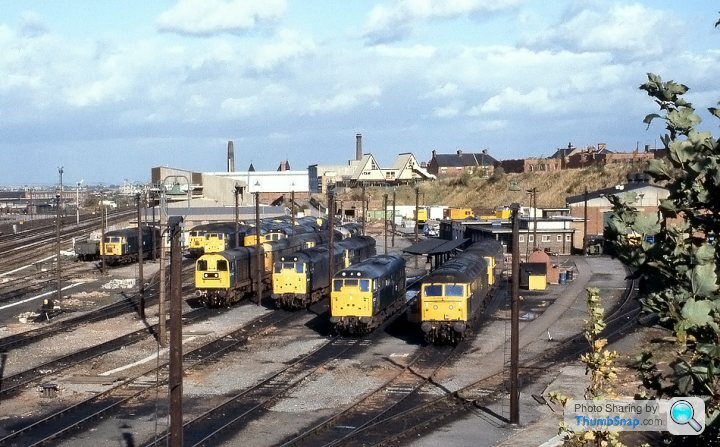
Excellent photo, keep them coming.Here's Leicester in 1984, with the stabling and fuelling point laid out on the site of the '50s roundhouse....

Nice to see my work depot in the background too

Thanks, will do  . I really need to rescan some of own pics properly. In the meantime here are some London Midland Region pics....
. I really need to rescan some of own pics properly. In the meantime here are some London Midland Region pics....
Wolves Low Level in 1966, newly revamped in the modern corporate image but still grim....
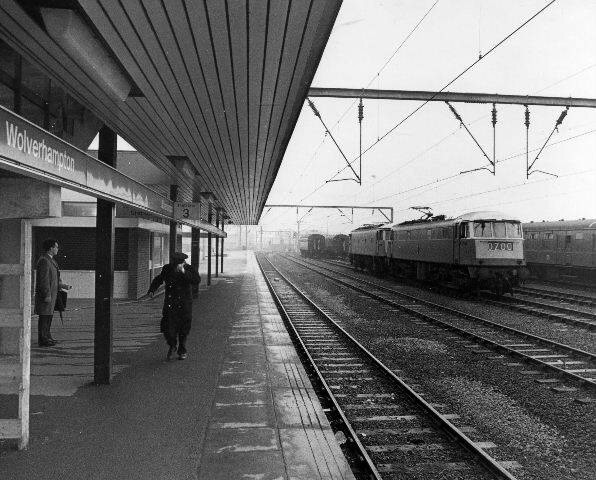
24 035 at the south end of Bescot Yard in July 1977....

Bescot Yard in April 1977, 24s were still common at Bescot right up until the last one was withdrawn in 1980 but they rarely came south of there....
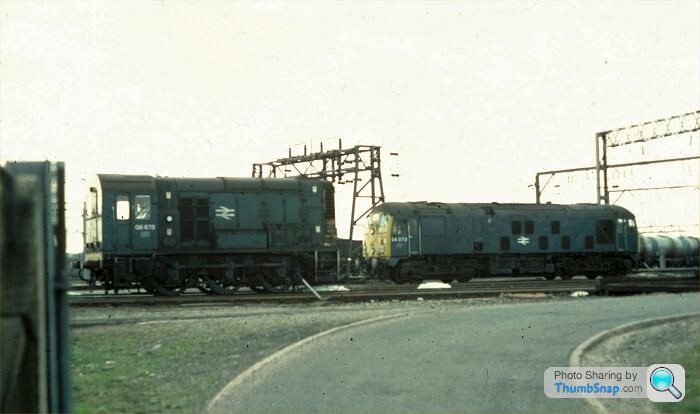
Class 25 5226 at Leicester in February 1972....
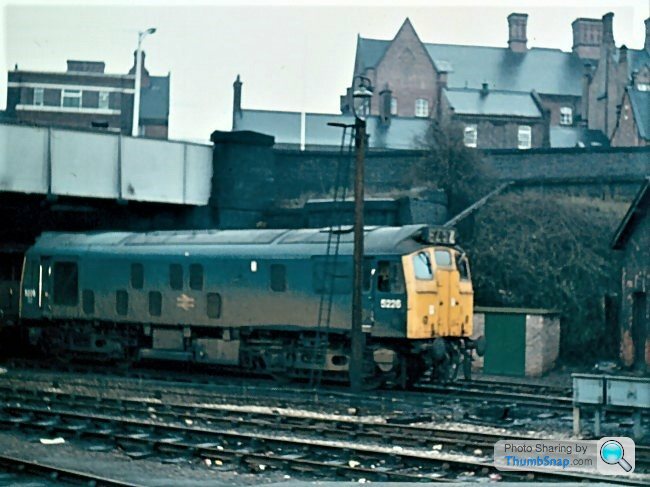
Class 47 D1958 on an inter regional service at Brum New Street c.1970....

44 005 in Derby Loco Works in August 1978....
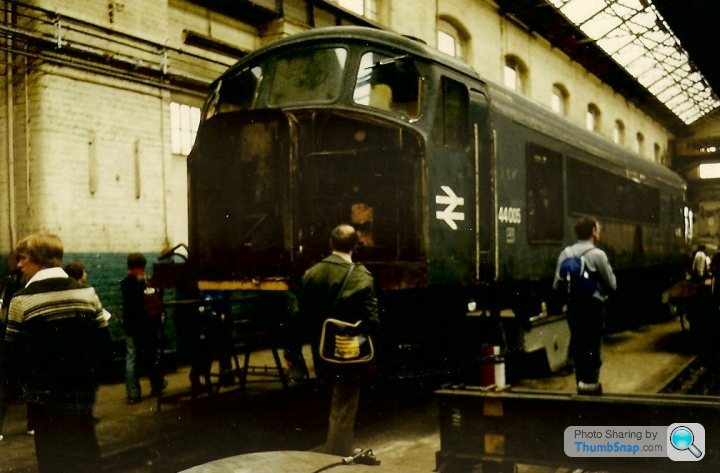
Leicester Depot on a very gloomy 1st December 1982, I'd not long joined the railway and had to deliver some letters to the shed master there, I took my Dad's Kodak Instamatic and grabbed this awful grainy shot before blagging a cab ride on 31 418 back to Nuneaton. I had to leave my old Zenith camera at home as it fell to bits the week before! At the time I was still on the BR / YTS course and awaiting a footplate vacancy which came up at Willesden in January....
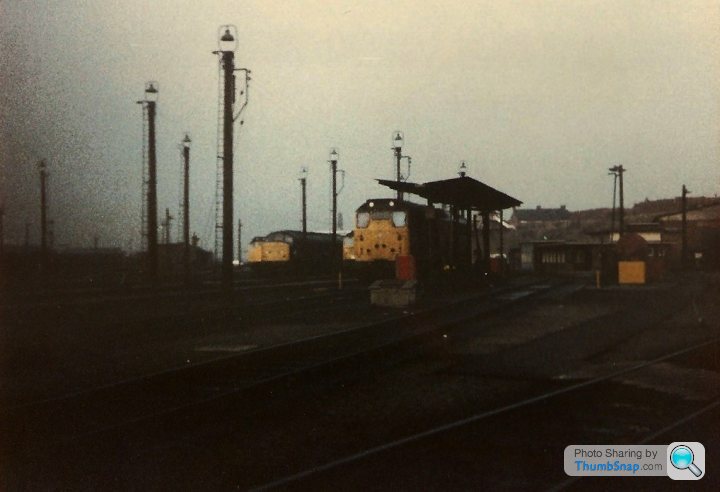
At Nuneaton I grabbed this shot of 25 138 before catching a 310 unit back to Rugby....
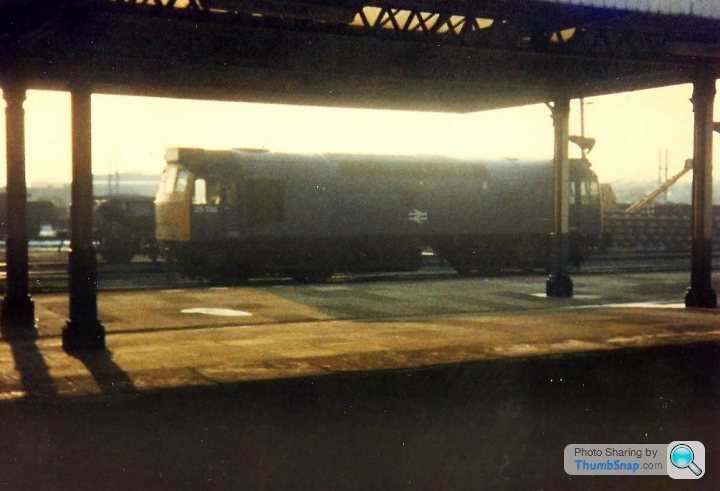
Preston station, April 1968....
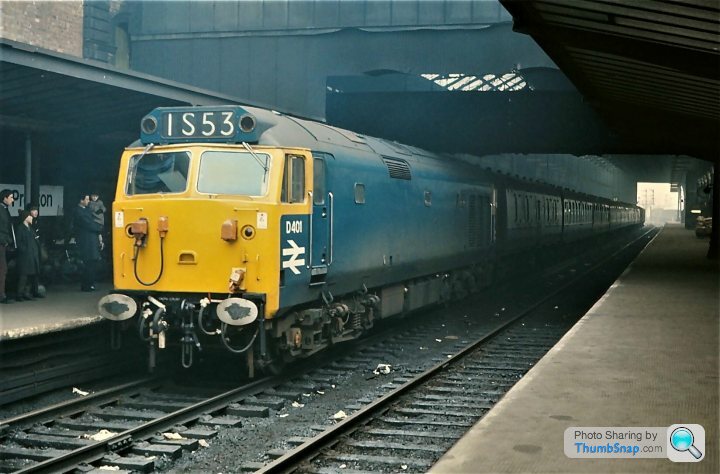
45 069 at Brum New Street in December 1975....
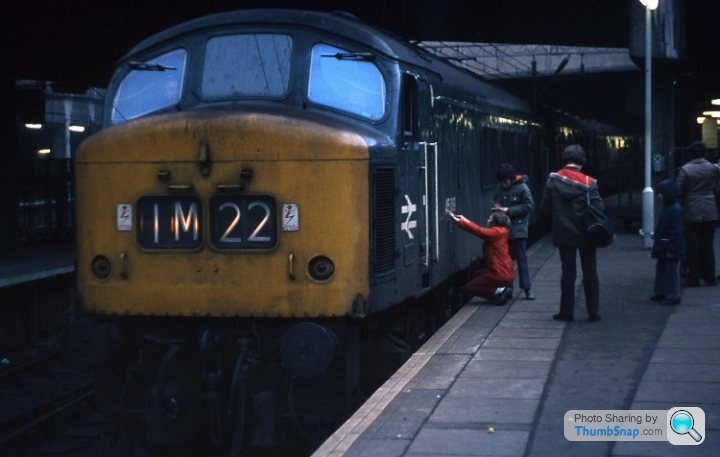
The next three are of Bedford in 1972, it all looks so antiquated and is very different now....

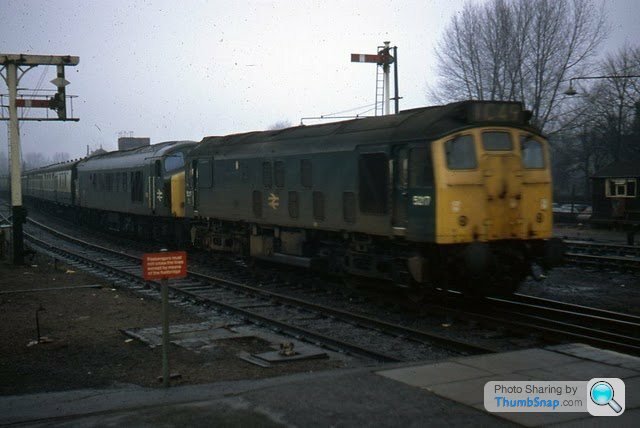

Bescot in the gloom of December 1977....
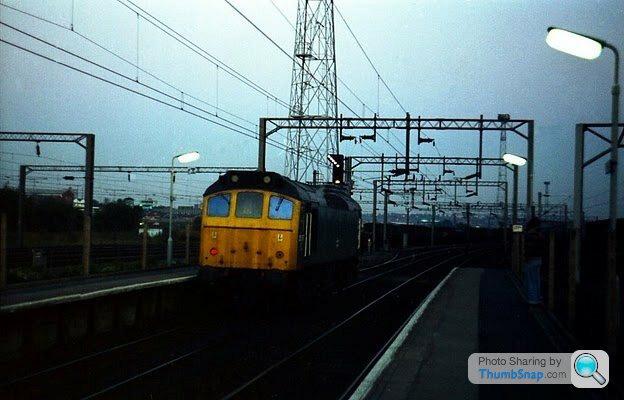
St.Pancras in the late '70s....
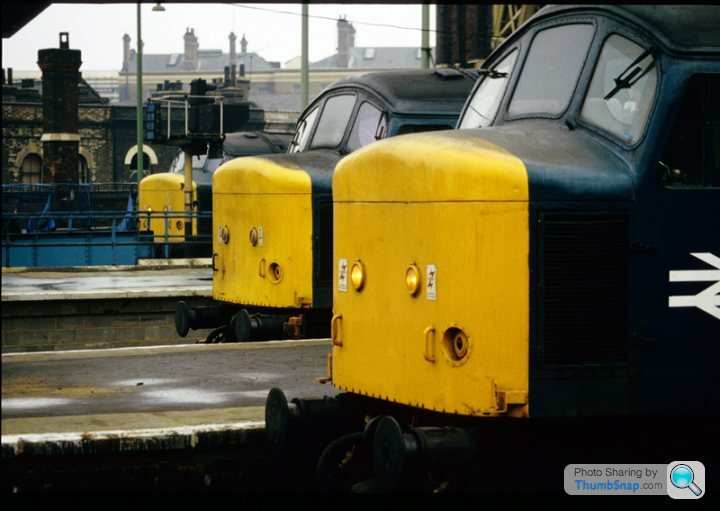
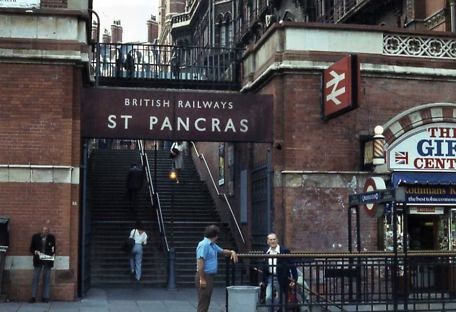
The north end of Crewe station in April 1973, the signalbox in the background is now part of the heritage centre....

Wellingborough in 1972....





 . I really need to rescan some of own pics properly. In the meantime here are some London Midland Region pics....
. I really need to rescan some of own pics properly. In the meantime here are some London Midland Region pics....Wolves Low Level in 1966, newly revamped in the modern corporate image but still grim....

24 035 at the south end of Bescot Yard in July 1977....

Bescot Yard in April 1977, 24s were still common at Bescot right up until the last one was withdrawn in 1980 but they rarely came south of there....

Class 25 5226 at Leicester in February 1972....

Class 47 D1958 on an inter regional service at Brum New Street c.1970....

44 005 in Derby Loco Works in August 1978....

Leicester Depot on a very gloomy 1st December 1982, I'd not long joined the railway and had to deliver some letters to the shed master there, I took my Dad's Kodak Instamatic and grabbed this awful grainy shot before blagging a cab ride on 31 418 back to Nuneaton. I had to leave my old Zenith camera at home as it fell to bits the week before! At the time I was still on the BR / YTS course and awaiting a footplate vacancy which came up at Willesden in January....

At Nuneaton I grabbed this shot of 25 138 before catching a 310 unit back to Rugby....

Preston station, April 1968....

45 069 at Brum New Street in December 1975....

The next three are of Bedford in 1972, it all looks so antiquated and is very different now....



Bescot in the gloom of December 1977....

St.Pancras in the late '70s....


The north end of Crewe station in April 1973, the signalbox in the background is now part of the heritage centre....

Wellingborough in 1972....





Gassing Station | Boats, Planes & Trains | Top of Page | What's New | My Stuff




